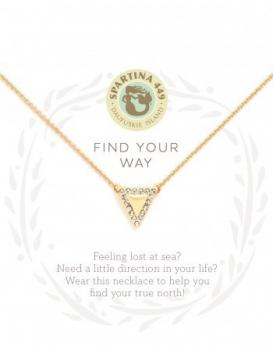Ugly Truth of Fast Fashion
10/3/2022

Did you know in the last two decades, the world consumption rate for clothing has risen by over 400%? That means the world now consumes around 80 billion pieces of clothing yearly! For many decades clothing pieces had a much longer lifespan, but with today’s fashion trends quickly changing, consumers are looking for ways to keep up with trends in an affordable way. Fast fashion is the production and design of making trendy fashion pieces quickly and cheaply available to consumers. Their designs are typically based on celebrity culture and high-end fashion.

For example, less than 24 hours after Kylie Jenner was spotted celebrating her birthday in a pink silk dress, a fast fashion brand released an identical piece just a few hours later. Kylie’s dress was from the well-known designer Peter Dundas with an estimated price of $300. The popular fast fashion brand Fashion Nova created a copycat style, selling it for $60. Now currently on sale for $10.98!
The extremely low prices and “affordability” of these clothing pieces come at a cost of negative environmental and social impacts. Before you purchase a new wardrobe or stock up on fall sweaters, check out these shocking facts about the fast fashion industry that might prove just how important it is to think before you buy.
More than 50% of fast fashion clothes will be discarded within one year of purchase due to the rapidly changing trends.
Many consumers choose to shop fast fashion because it is an easy and affordable way to keep up with trends without breaking the bank. Consumers find themselves in a never-ending cycle of buying and replacing because what’s trending today won’t be trending in a few weeks. Since consumers are rapidly buying and discarding clothing, producing high-quality items is not a top priority for fast fashion companies. These pieces are made from very cheap and low-quality fabrics not meant to last a lifetime. Most items will shrink in the wash or become damaged before they get a second wear. The consumer mindset of wear and throw away has resulted in about 85% of all textiles ending up in landfills.
Mountain of discarded fast fashion clothing pieces piling up in the Chilean Dessert.
The fashion industry produces 10% of all humanity’s carbon emissions.
The fast fashion industry is responsible for 10% of annual global carbon emissions, more than all international flights and maritime shipping combined. The mass amount of clothing being produced results in mass amounts of resources needed to manufacture these items. To make one cotton shirt, 2,700 liters of water is used, enough drinking water to last a person 2.5 years. China is the world’s largest textile producer, and not far behind are India, Vietnam, Turkey, Cambodia, and Indonesia. The lack of environmental laws and regulations in these countries makes it very easy for brands to waste and pollute more than any other industry. With every single piece of clothing produced comes a carbon footprint.
A 2018 US department of labor report found evidence of forced and child labor in the fashion industry in Argentina, Bangladesh, China, Brazil, India, Turkey, Indonesia, the Philippines, and Vietnam.
It’s no secret the fashion industry is very labor dependent. It is known for unfair wages, poor working conditions, long hours, and the use of child labor. According to the non-profit Remake, garment workers, primarily women, in Bangladesh make around $96 per month. The government’s wage board suggested that a garment worker needs over three times that amount to live a “decent life with basic facilities.” While some may argue that the rise in fast fashion demand has aided in these countries’ economic growth, labor workers still face unfair wages and safety and health risks. Each day workers face severe conditions such as unsafe buildings, high temperatures, exposure to toxic materials and chemicals, and workplace harassment and violence. Factories are focused on production and profit and not on human welfare.

How can we stop the dangers of fast fashion?
Consumers drive demand, and if we can begin to focus on shopping for more sustainable and ethically made brands, it can be a driving force in slowing down the fast fashion industry. Consumers also have a chance to put pressure on brands and factories to develop more environmentally friendly manufacturing methods. If they were more mindful of their consumption rate and ended the buy and throw away cycle, it would slow down the need to produce in such mass quantities. It would also force factories and brands to focus on creating more high-quality pieces made from sustainable fabrics that are meant to last. For example, polyester is a common material used in today’s textile industry and is three times more carbon-intensive than cotton. It is also a leading contributor to plastic pollution in the oceans. Brands such as H&M are committing to using 100% recycled and sustainably sourced fibers by 2030, and Zara has plans only to use recycled cotton, linen, viscose, and polyester fiber by 2025. There are also many countries and organizations putting laws and initiatives into place focused on creating a more sustainable textile industry. The United Nations Alliance for Sustainable Fashion is an initiative of United Nations agencies and allied organizations focused on changing the fashion path and reducing its negative environmental and social impacts.
While many brands and organizations are focused on changing the negative environmental and social impacts of the fashion industry, there are still endless opportunities for us to do our part. Check out the tips below for ways you can spot and avoid fast fashion brands.
How to Spot a Fast Fashion Brand
Here are some red flags for clothing shopping!
- Clothing is made from cheap materials such as polyester, acrylic, and polyamide
- The brand offers frequent new arrivals and large amounts of a style or collection
- Lack of transparency around their production methods and factories
- Low prices or regular discounts such as “buy one get one free”
How to Avoid Shopping Fast Fashion
- Buy Second-Hand
- Share and Swap clothing with friends and family
- Shop Local
- Create a capsule wardrobe which is a collection of timeless clothing pieces that won’t go out of style and can last you a lifetime. Check out these tips on creating a timeless wardrobe.
- Look for sustainable materials such as organic linen, bamboo, hemp, and cotton.
- Research a brand and its production methods. Brands that lack transparency around their manufacturing or materials are ones to avoid.





